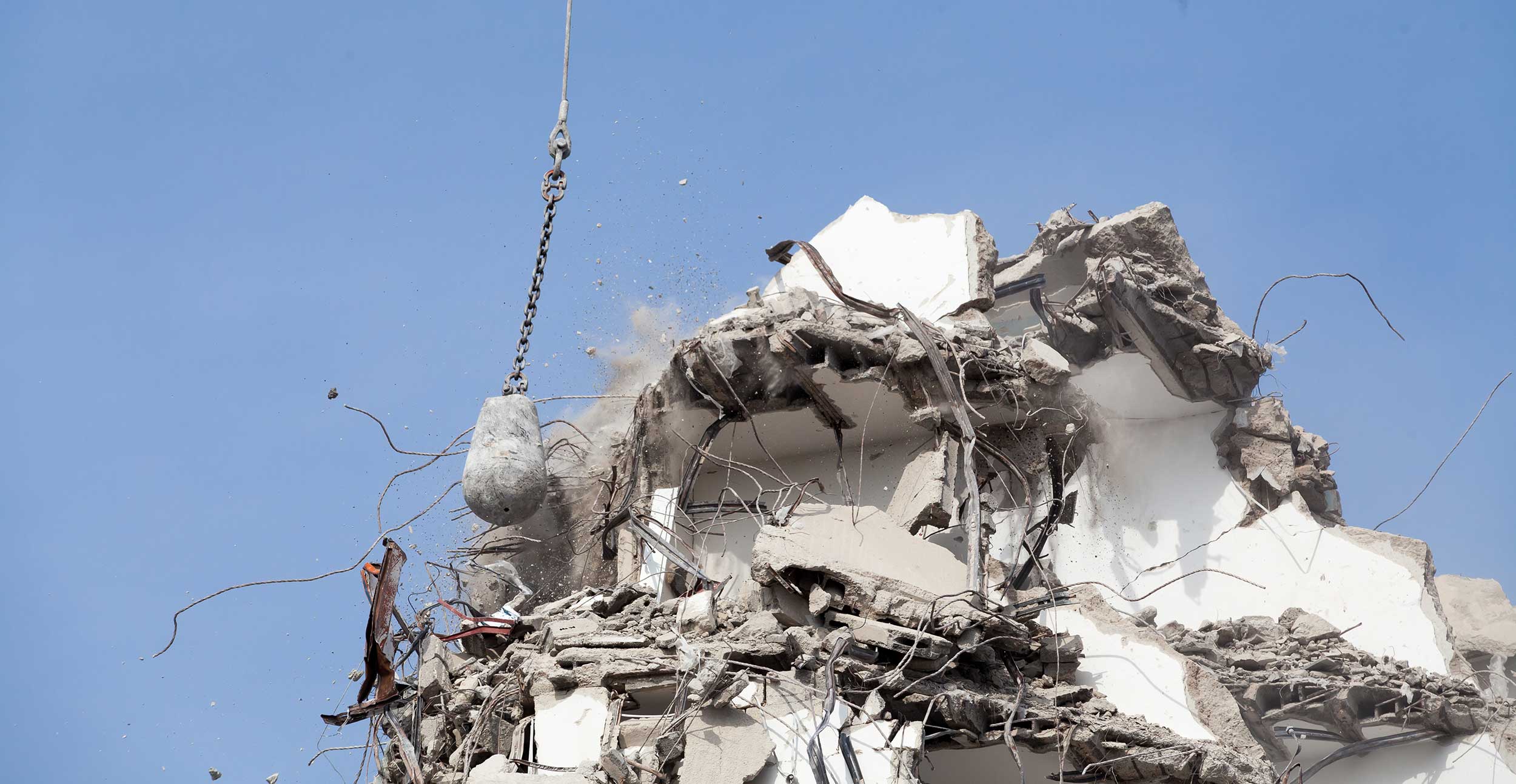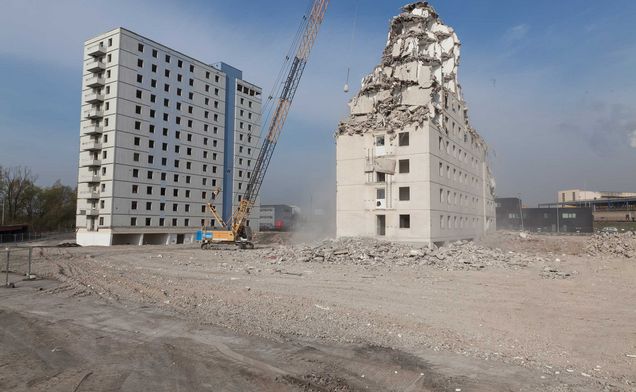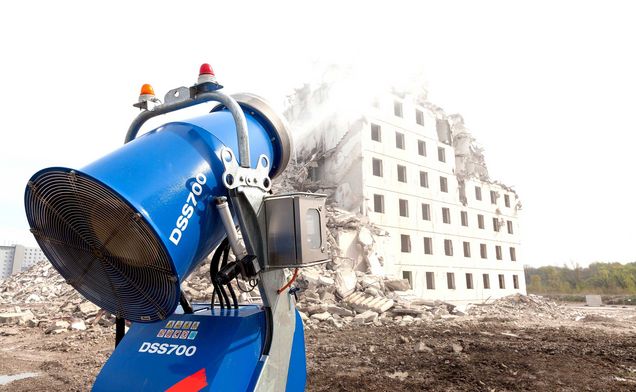Construction site clearance at a high level
April 10, 2014 | Markus Lackner
With a gigantic space of 100,000 cubic metres, the demolition was one of the biggest to be undertaken in the last 10 years in the Alpine republic. The demolition of the buildings, which were originally used to house employees of the former VÖEST, became necessary on account of regional planning considerations – the four 45-metre high buildings were no longer in harmony with the constant changes in urban development, industry and living comfort.
Demolition technology
Before the actual demolition work could begin, the buildings had to be cleared and gutted. This involved the recycling and disposal of around 500 tons of materials of highly varying fractions. “We cleared everything, from door frames to wash hand basins”, reported an operator. This work commenced in November of last year. The actual demolition work has been in progress since the beginning of the year.
In general, controlled explosions are used for demolition projects of this order. In the case of the buildings in the Lunzerstraße in Linz, however, this proved impossible. “Owing to the media supply lines which had been laid in the construction site, this would not have been expedient”, explains project manager, Bernhard Radler, going on to say: “This is why we decided to use a demolition ball“. In order to ensure safety for the transportation of the demolition ball, which weighed around 1300 kilograms, a Liebherr cable excavator with a dead weight of 45 tons and 20 tons of rear ballast was used. It had only been possible to use the demolition ball because there was sufficient clearance around the buildings to be demolished. Further excavators, including, for example, a CAT with a dead weight of 64 tons and a 33-metre long boom, were used for additional demolition, crushing and sorting work.
In addition to the demolition work, the mineral materials were processed on-site using a mobile crusher. In this way, around 100,000 cubic metres of concrete were recycled for use as back-filling material. This is equivalent to around 5000 truckloads. In order to avoid unnecessary transportation, the material was reused on site. Sorting grapplers were used extensively to separate timber and metals and recycle them in accordance with fraction-specific specifications.
But to reduce dust generation to a minimum, Radler brought out the big guns: “In addition to water cannons, we also used a powerful dust-laying system”, explains Radler who has been responsible at Felbermayr for some spectacular demolitions over the last 25 years. The system works much like a snow cannon, and with a working radius of 340 degrees, it has a range of 70 metres. In order to ensure safety on the construction site, more then 400 linear metres of construction fencing was erected in addition to other measures. The demolition work is to be completed by September.




